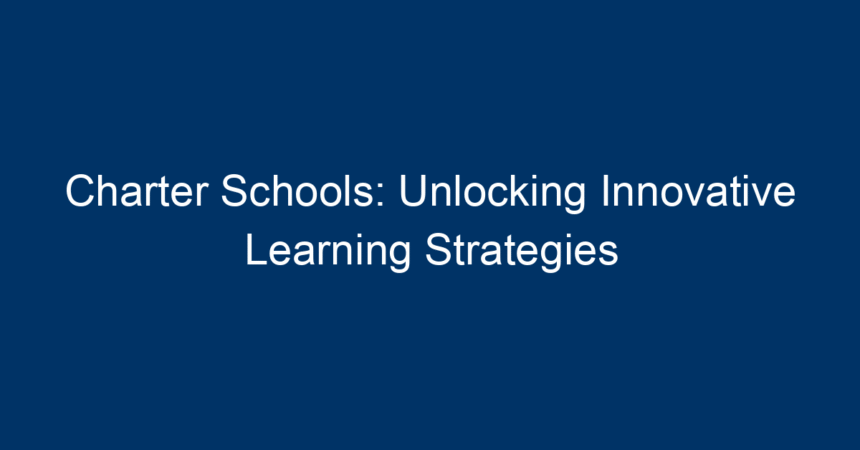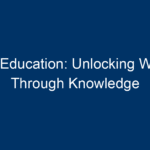Introduction
In the evolving landscape of education, charter schools have emerged as a unique alternative to traditional public schooling. With their focus on innovation, flexibility, and accountability, these institutions are redefining learning strategies to cater to diverse student needs. By fostering an environment that encourages creativity and engagement, charter schools are not just places of education—they are hubs of transformative learning. In this article, we will explore what makes charter schools innovative, delve into their various strategies, and discuss how they are reshaping the future of education.
What Are Charter Schools?
Charter schools are publicly funded institutions that operate with greater flexibility than traditional public schools. They are established based on a charter, which is a performance contract outlining the school’s mission, program, students served, and methods of assessment. This autonomy allows charter schools to create unique educational programs tailored to the specific needs of their communities.
The Benefits of Charter Schools
-
Flexibility in Curriculum: Charter schools often have the freedom to design curricula that align with their educational philosophy. This flexibility enables them to implement innovative teaching methods that may not be feasible in traditional schools.
-
Accountability: Unlike regular public schools, charter schools must meet specific performance standards. If they fail to achieve the goals outlined in their charter, they risk closure. This accountability promotes high educational standards and encourages continuous improvement.
- Focus on Specialization: Many charter schools adopt a specialized approach, focusing on themes such as STEM (science, technology, engineering, and mathematics), arts, or bilingual education. This specialization can prepare students for specific career paths or fields of study.
Innovative Learning Strategies Utilized by Charter Schools
Project-Based Learning (PBL)
One of the most effective strategies employed by many charter schools is project-based learning. In PBL environments, students engage in real-world projects that require critical thinking, collaboration, and problem-solving skills. This method allows students to apply classroom knowledge in practical settings, making learning more relevant and engaging.
For instance, a charter school focusing on sustainability might have students design and implement a community garden. Such projects not only enhance academic skills but also foster a sense of community responsibility.
Blended Learning Models
Blended learning combines traditional face-to-face instruction with online elements. Many charter schools utilize this approach to provide personalized learning experiences. With blended learning, students can progress at their own pace, receiving additional support or advanced materials as needed.
Schools like the Summit Public Schools network have effectively created a blended learning environment where technology plays a critical role in the educational experience. Each student’s learning path is tailored, allowing for differentiation that can cater to individual learning styles.
Social-Emotional Learning (SEL)
Understanding the importance of emotional and social development, charter schools are increasingly integrating social-emotional learning into their curricula. SEL programs focus on developing students’ abilities to manage their emotions, establish positive relationships, and make responsible decisions.
By fostering a supportive environment, charter schools can significantly impact students’ overall well-being, paving the way for better academic outcomes and healthier school environments.
Hands-On Learning Environments
Charter schools often gravitate towards hands-on learning experiences, allowing students to engage directly with materials and concepts. This approach makes lessons more tangible and memorable, enhancing retention and understanding.
For example, a charter school might collaborate with local businesses and organizations to create internships or mentorship programs. This real-world exposure allows students to see the practical applications of their studies, preparing them for future workforce challenges.
Challenges Faced by Charter Schools
While charter schools offer numerous benefits, they are not without challenges. Understanding these hurdles is crucial for parents and policymakers alike.
Funding Limitations
Charter schools receive funding based on enrollment numbers, which can be unpredictable. This variability may lead to financial instability, making it difficult for schools to maintain or expand programs. Effective management and community support are essential for overcoming these funding limitations.
Regulatory Scrutiny
Charter schools often operate under strict regulations and oversight. While accountability is a significant advantage, excessive bureaucracy can hinder innovation and quick decision-making processes. Striking a balance between regulation and autonomy is vital for the success of charter schools.
The Impact of Charter Schools on the Education System
Increasing Choices for Parents and Students
The rise of charter schools has expanded educational choices for parents and students, allowing families to select schools that best align with their values, aspirations, and educational philosophies. This increase in choice can drive improvements in traditional public school systems as well, as they may feel the pressure to innovate and meet the expectations of parents and students.
Promoting Educational Equity
Charter schools often serve underserved communities, focusing on equity and access to quality education. By providing unique programs and fostering inclusive environments, charter schools can help close achievement gaps among different demographic groups.
Conclusion
Charter schools are at the forefront of educational innovation, utilizing a range of learning strategies that capture the interest and imagination of students. From project-based learning to blended models and social-emotional learning, these schools emphasize individual growth and community engagement. While challenges persist, the positive impacts of charter schools on choice and equity in education are undeniable.
As parents, educators, and policymakers consider the future of our education system, supporting and learning from charter schools can provide valuable insights into effective teaching and learning practices. Through collaboration, innovation, and a commitment to accountability, charter schools can continue unlocking new pathways for meaningful learning experiences.
Actionable Insights
-
Engage with Local Charter Schools: Visit local charter schools to observe their innovative practices in action. Understand how these schools meet the needs of their communities.
-
Advocate for Educational Choice: Support initiatives that promote parental choice in education to ensure all families have access to quality schooling options.
-
Stay Informed: Keep abreast of developments in the charter school realm. Understanding their successes and challenges can better inform educational policies and practices moving forward.
- Explore Collaboration: Consider partnerships between charter and traditional schools to share best practices and elevate the educational experiences of all students.
By taking these steps, we can contribute to a dynamic and inclusive educational landscape where every student has the opportunity to thrive.




